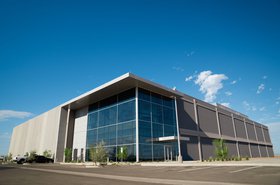Like so many other proposals to halt or mitigate climate change, carbon capture and storage has only ever been as real as it had to be.
As far back as the 1950s, it was realized that greenhouse gases in the atmosphere could cause global warming. In the 1970s and 1980s, it became clear that it was actually happening, and by 1990, it was obvious that societies should change to avoid harmful climate change. Sadly, at this point, action didn't happen, largely because public debate, confusion and complacency allowed industry to continue business as usual.
Much of this was controversy deliberately created by the fossil fuel industry. Some denied the effect existed, others argued it would not be as harmful as science predicted. Some warned that any attempt to reduce carbon emissions would be too expensive to contemplate. Others said the opposite, airly promising that future technologies would emerge, which would easily solve the problem.
Carbon capture was one of those promised panaceas.
Whatever happened to CCS?
On the face of it, carbon capture is a great idea. Use technology to remove carbon from the air, and we could potentially mitigate, or reverse the harm caused by our industries which put the carbon there.
However, there's no agreement on how best to do it, where to do it, and most importantly, who will pay.
In some ways, carbon capture is the fossil fuel industry's equivalent of the nuclear waste question. The industry creates a toxic by-product, which has to be dealt with. Fossil fuel output causes global warming, as well as cancer and other illnesses (statistically far more of them than nuclear power ever cause). The difference is that fossil fuel waste is mostly gas, and has been allowed to disappear unhindered up smokestacks for more than a century. And the harm it causes has only been widely known recently (if you call 60 years recent).
Since the 1980s, it's been talked up by the fossil industry (when it has conceded that CO2 is a problem) as a way to allow continued fuel burning, without harming the environment. The first moves to remove carbon focused on cleaning the CO2 and other pollutants out of the smoke emerging from coal and oil power plants - but several high profile efforts to clean up the emissions turned into high profile failures. Others underperformed massively.
Apart from anything else, removing carbon takes energy, potentially generates its own carbon, and costs money. That's why we don't hear so much about carbon capture at fossil plants. The fossil companies would prefer us to clear up their mess, and so carbon capture has moved to direct-air schemes distant from coal power stations - like Climeworks, which is dragging carbon out of the clean air of Iceland, at a cost of $1250 per ton.
This price has become a concern, because while the fossil fuel industry fiddled with carbon capture, the world waited, and put off real action on practical ideas like insulation and cutting energy use. The result is we have now reached a stage where carbon capture is essential - even though, in any real sense, carbon capture still does not exist, in a form that can actually handle the problem. .
That's an issue for tech firms. They can't be climate neutral and carry on growing, without carbon capture.
Microsoft is one of the only organizations honest enough about its own difficulties to admit that. It recently revealed that the spiraling "Scope 3" emissions from its customer and supply chain have torpedoed its efforts to become climate neutral, because the Scope 3 emissions - including fossil electricity used by customer and suppliers - would more than cancel the renewable power used by Microsoft itself.
In 2021, Microsoft's own (Scope 1 and 2) emissions were about 290,000 tons of CO2 equivalent. Its Scope 3 emissions were vatly more - nearly 13 million tons.
Since Microsoft can't control emissions in its ecosystem, it has said it needs carbon removal to cover that. And it simply cannot buy that much carbon removal at today's prices.
Microsoft says it hopes to cut its Scope 3 emissions by 50 percent (which would be scarcely imaginable or feasible), but even if it did that, to cover half this year's emissions would cost $9 billion at the prices charged by the commercial direct-air capture company Climeworks.
Microsoft has said prices must come down to below $100 per ton if this is to approach any kind of sense.
New tech needed?
Clearly, prices have to come down, which is why this week saw moves to promote the development of new carbon capture technologies - at a time when we should be deploying, not developing.
Elon Musk had previously put up $100 million through his charitable foundation for an Xprize looking for new ideas for carbon capture. Last week, this prize issued $15 million in first-round grants to promising contenders. The prize is looking for technologies which can scale to collecting 1 gigaton of carbon per year - and would prefer that they are themselves carbon negative.
The final prize won't be issued till 2025, which is halfway through the decade in which we really need carbon capture to take off at industrial scales.
The size of the prize is interesting. At $100 million it's the biggest Xprize ever - but as an indication of how seriously this is being taken, let's point out that it's a tiny fraction of the money Musk offered to indulge a whim to buy Twitter.
Perhaps more promising is the Frontier initiative led by Stripe (with Shopify, Meta, and Alphabet in tow). That is more than a technology beauty contest, but an advanced commitment, a promise to buy $925 million of carbon removal this decade.
The group do not know how much carbon that money will buy, but they hope the size of the pot - and the buying expertise of the Frontier organization - will prompt better technologies to the fore and stimulate the carbon capture market.
Given that the problem has been well known for 40 years, we should be beyond this stage now. But at least there are tech firms which understand that they have a choice.
Get carbon capture working, or you will have to stop growing.





